What is a handheld spotlight
A handheld spotlight is a high intensity flashlight that is typically designed to produce a far-reaching beam of bright white light. It features an ergonomically designed handle that offers the user a comfortable grip. The handle usually comes in a pistol-grip or lantern-grip design. The addition of such a handle makes it convenient to carry the flashlight around and allows to use a more powerful light head which often tends to be too bulky to hold in the palm of your hand. As semiconductor-based LED lighting becomes the dominant technology in portable lighting applications, the handle-incorporated design offers a unique advantage over the torch design. The constraint to the thermal design due to the size of a flashlight often leads to the utilization of the housing as part of the heat sink for LED thermal management. The housing of a handleless high power LED torch can run hot over an extended period of operation, even when there’s a rubberized sleeving around the grip. The heat transfer makes it uncomfortable to hold the light in the hand. The use of a dedicated handle provides complete thermal isolation, allowing for comfortable, prolonged use of the LED light.
Far-reaching beam helps long-range target acquisition
Handheld spotlights are often used as the workhorses for search-and-rescue missions, outdoor adventures, commercial fishing activities, emergencies and disaster preparedness, and applications demanding dependable on-the-go illumination that can shine upon a distant object or cover a wide area.
Handheld spotlights that can throw a sharply-focused beam far into the distance are also called searchlights. LED searchlights are commonly high output spotlights that can deliver up to tens of thousands of lumens and project the beam at far distances of over 1,000 meters. Handheld spotlights are also available in a flood beam option, which obviously does not live up to their name.
The widespread illumination is produced either by an additional floodlight module or from the luminaire’s light engine. The ability to accommodate a larger light head allows the handheld light to carry a light engine with a large light emitting surface (LES) for uniform area lighting. A competitive edge of handheld spotlights over other types of handheld lighting systems is their ability to accommodate large light engines, high-capacity battery packs, and the abundance of functionalities. This advantage is more pronounced with the adoption of LED technology.
Light source
Handheld spotlights that produce a tight, long reaching beam typically make use of high power LEDs which enable tighter beam control and higher punch in the beam due to their high lumen output and smaller apparent source size. These LEDs are predominantly ceramic packages that bond the LED chip to a metallized ceramic substrate. This package platform creates a high efficiency thermal conduction path to transfer heat away from the LED junction and makes the semiconductor packages less prone to thermal degradation. Operating ceramic packages at high operating temperatures and drive currents challenges the control of threading defect densities in the semiconductor crystalline structure.
Chip technology
Conventional InGan LED chips are formed through epitaxial growth of the active device layers on a substrate. The lattice mismatch between the GaN layers and the substrate leads to defects in the crystalline structure known as thread dislocations. The presence of thread dislocations causes non-radiative electron-hole recombination and these defects will continue to grow under high junction temperatures, which accelerates the permanent depreciation in light output and eventually results in shorter lifespan. Threading dislocations form in the highest densities on sapphire-based LEDs which are incorporated in the majority of contemporary SMD packages.
Cree LEDs have been gaining a consistent reputation for their industry-leading reliability and efficacy. These high power LED packages use InGaN chips with the semiconductor layers grown on silicon carbide (SiC). The density of threading dislocations is significantly reduced with the GaN-on-SiC technology. High power LEDs built on the chip scale packages (CSP) LED have gained prominence due their improved device architecture. Mid-power SMD and chip-on-board (COB) packages are typically used in floodlighting modules.
Thermal management
The LEDs are mounted on a metal core printed circuit board (MCPCB) which thermally, electrically, optically and mechanically interfaces the LED packages to the operating environment. The LED module, which refers to the array of LEDs assembled on the MCPCB, is mounted on an aluminum heat sink. A thermal interface material (TIM) may be sandwiched between the MCPCB and heat sink to maximize thermal conduction. The MCPCB, TIM and heat sink forms the system thermal path for the efficient removal of heat from the LED junction to the ambient environment. The exposed heat sink may incorporate integral fins to increase the surface area for natural air convection. Heat pipes may also be further added to the heat sink to speed up the flow of heat flux. Fans are built into the heat sink assembly to improve the transfer of thermal energy when the thermal load of an LED spotlight exceeds the heat dissipating capacity of a passive heat sink.
Beam control
In front of the LED module secondary optics such as reflectors or lenses may be installed to provide optical regulation. The optics are designed either to regulate light emitted by the entire LED module or to provide optical control at the package level. The LEDs are operated by a constant current driver which regulates both the current and voltage in order to drive the LEDs appropriately. The LED driver is often designed to allow dimming of the connected LEDs for the purpose of supporting lighting in different intensities (e.g., high, medium, low, or infinitely variable output) and different modes (e.g., steady output, strobe and SOS).
Energy storage and power management
Handheld spotlights can run on primary (non-rechargeable) batteries, secondary (rechargeable) batteries, or dual power systems that accept primary and secondary batteries. Rechargeable batteries that use lithium-ion chemistry are favored over other battery power options for most flashlight applications.
Lithium-ion batteries have the highest energy densities, lowest ow self-discharge rate, longest cycle life, and best deep discharging behaviors among all rechargeable battery chemistries. Secondary lithium batteries that are commonly incorporated in spotlights include 14500, 16340, 18650, and 21700 batteries. These cells typically have built-in charge control and protection circuitry to reduce the likelihood of battery fire and explosion which can be caused by overcharging, overdischarging, or other electrical or mechanical abuse.
Rechargeable spotlights typically come with a built-in micro USB charging port which allows the batteries to be charged with either 5V USB power or traditional AC or 12V DC power sources.

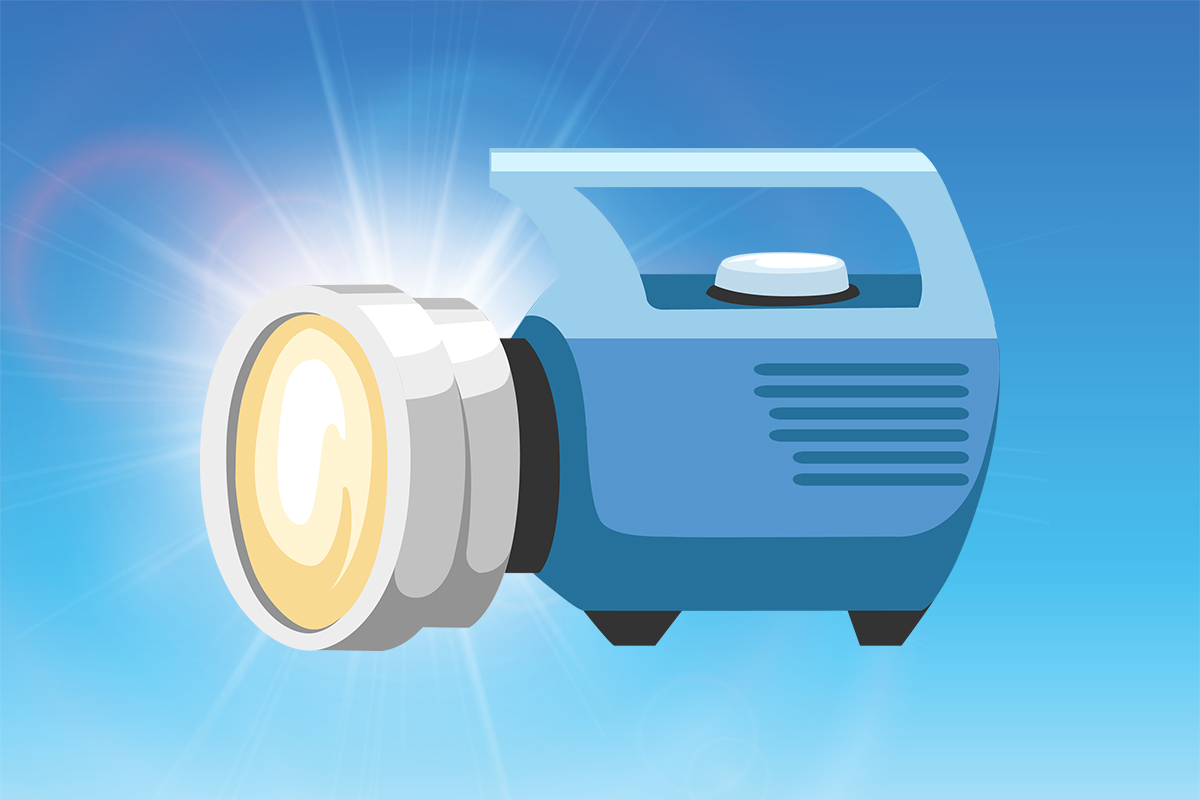
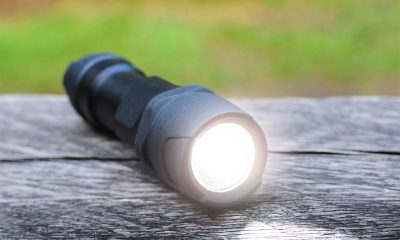
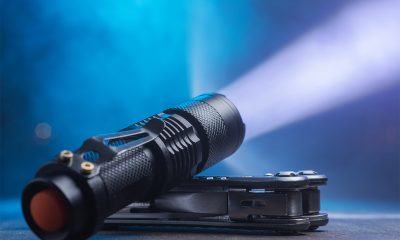


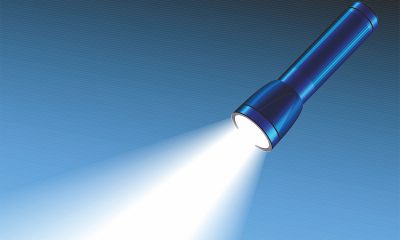

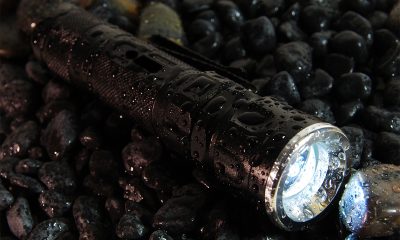
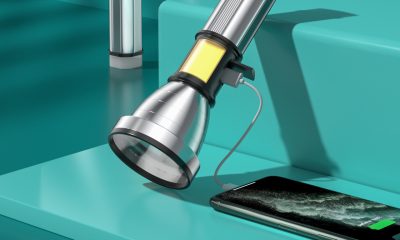








Loading...